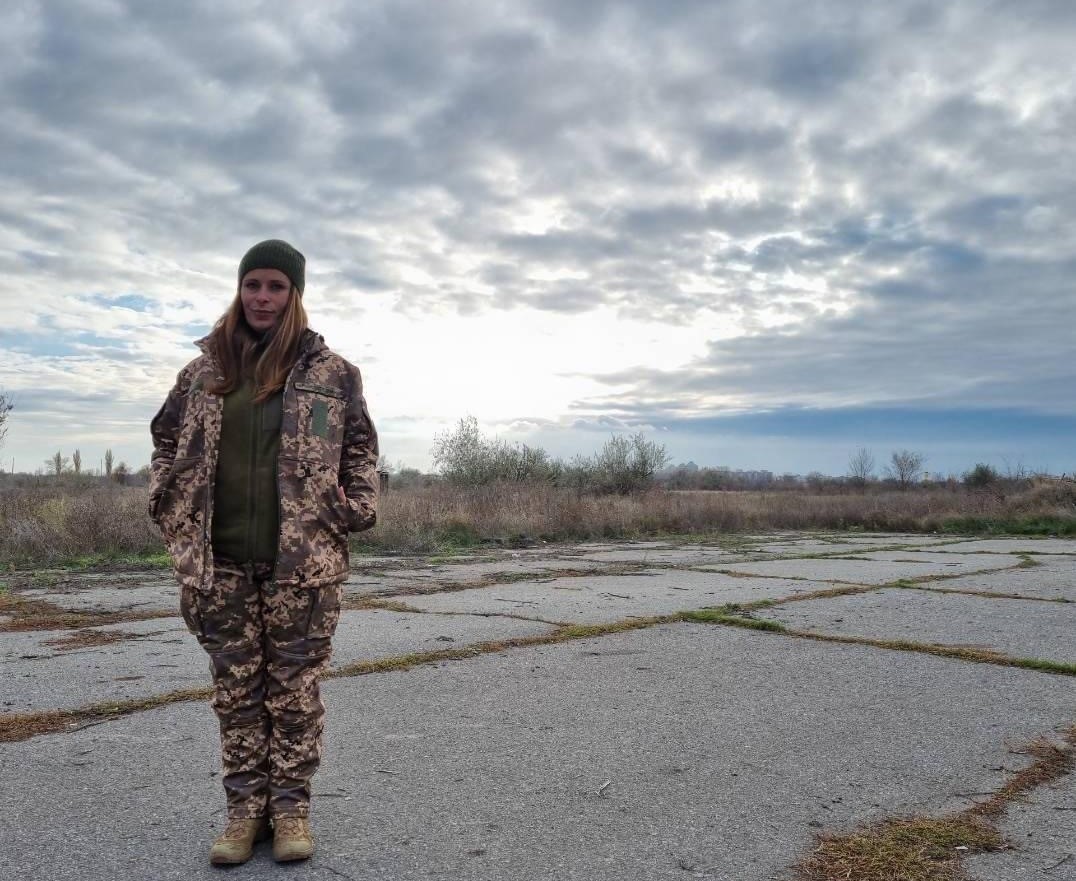In the words of Iryna Klochko: “Ukrainian women who join the army struggle with uniforms made for men.”
Date:

Iryna Klochko is a 38-years-old decipherer at "Eyes," a Ukrainian air intelligence unit. Before joining the army, she worked as a television director in Kyiv. Iryna is a graduate of the National Academy Government Managerial Staff of Culture and Arts. Recently Iryna joined the Veteranka Movement to be part of a community of like-minded people and benefit from its services. With support from UN Women, the Veteranka Movement advocates for the rights of women in the army, and offers female military personnel psychological, rehabilitation, reintegration and educational support.
“For me, a full-scale war was unexpected. The day before it was launched, my friends and I had a long conversation about whether this could happen. I thought that there would probably be a war, and soon. I just did not expect it to start the next day. When Russia invaded, I didn't panic. As a television director, I am used to stressful situations.
In the early summer of 2022, I asked a friend to help me find a job in the army. There were two options: sniper or decipherer. I didn't want to be a sniper. As for a decipherer, I didn't know anything about it. I had wanted to join the artillery troops, but there were no vacancies there. So, I joined air intelligence.
I didn't know what to do or how to do it, so I learned everything from my comrades. At the beginning, there was some discomfort because for seven years I worked in television with men who reported to me. Suddenly, I found myself in a community where men commanded me. I had to learn as quickly as possible to become an independent combatant.
The most difficult part of army life is combat missions in winter. You have to wear thermal underwear, clothes, a bulletproof vest, a helmet and a shoulder strap. How do you go to the toilet with all this? I tried for 15 minutes to do it without taking anything off. When I finally managed to do it, I asked my comrades to hold the bulletproof vest on me, lift its weight, and fasten it.
Most women who join the army struggle with the uniforms. All military clothes and equipment are made for men. For example, even if the waist size is fine for you, the legs would be so big that you’d need two more of you to fit in. You wouldn’t be able to move quietly because your trousers are so large, they would rustle. It's better not to not conduct deep reconnaissance missions with such trousers. Some girls manage to hem them.
The most problematic equipment is the bulletproof vest. For women with larger breast size, it can be very uncomfortable. The vest fits snugly to the body, and when you wear it all day, it hurts.”
To address equality in military uniforms and personal equipment, the Veteranka Movement operates a tailoring workshop to design female military uniforms. The workshop is an initiative by veteran paramedic Yulia Sidorova, a designer in civilian life. In May 2022, Yulia and her team researched American and Israeli uniforms and adapted the size grid to female anatomy. With the help of professional seamstresses and volunteers, the workshop has produced more than 100 demi-season and 25 winter uniforms. Each uniform is made at the request of a servicewoman free of charge. The Veteranka Movement continues to advocate for introducing standard female uniforms. So far, the Ministry of Defense has approved a sample of the summer field uniform for women, but winter uniforms are yet to be introduced.
This story was published within the framework of the UN Women project "Transformative Approaches to Achieving Gender Equality in Ukraine" with the support of the Office of the Vice Prime Minister for European and Euro-Atlantic Integration of Ukraine and funding from the Government of Sweden.